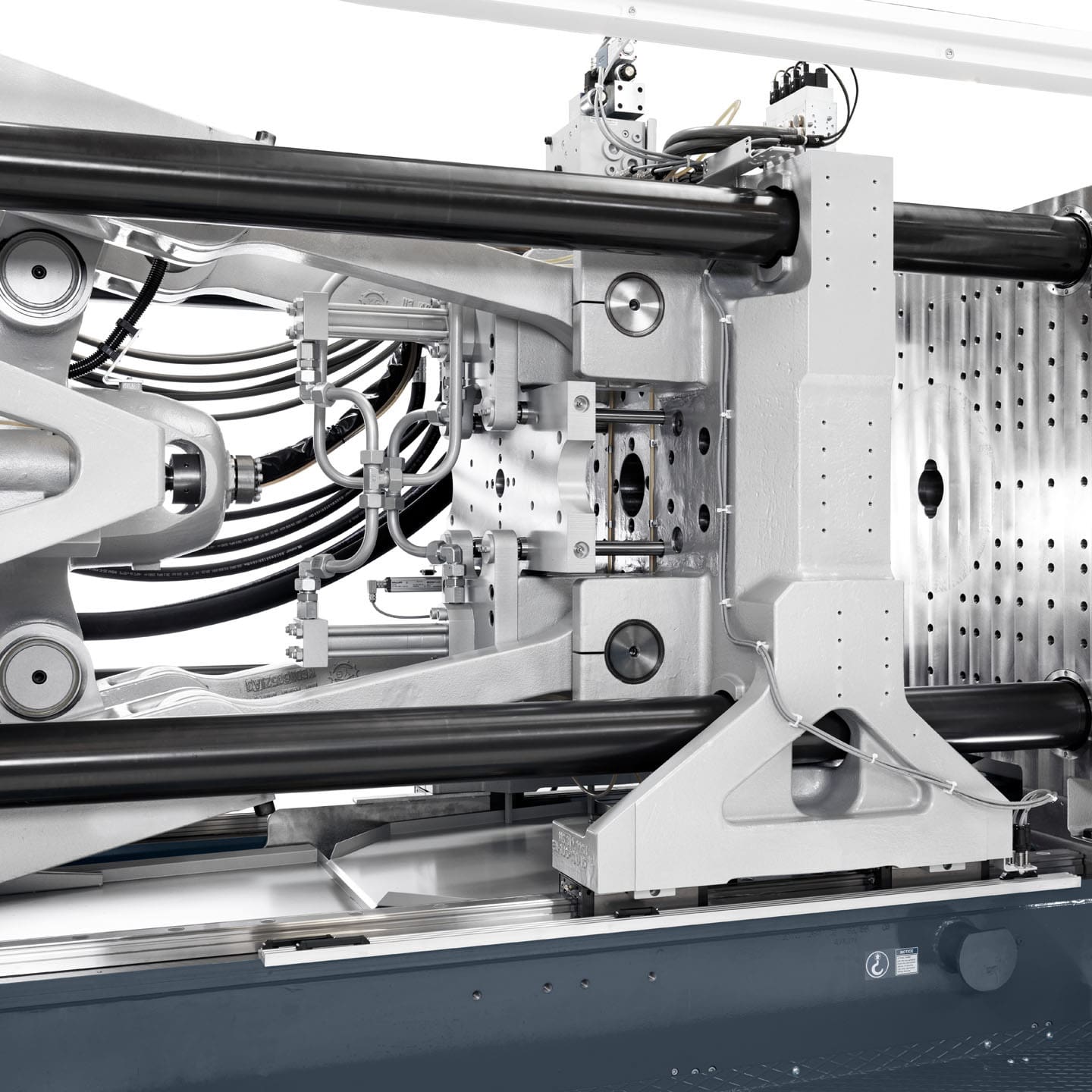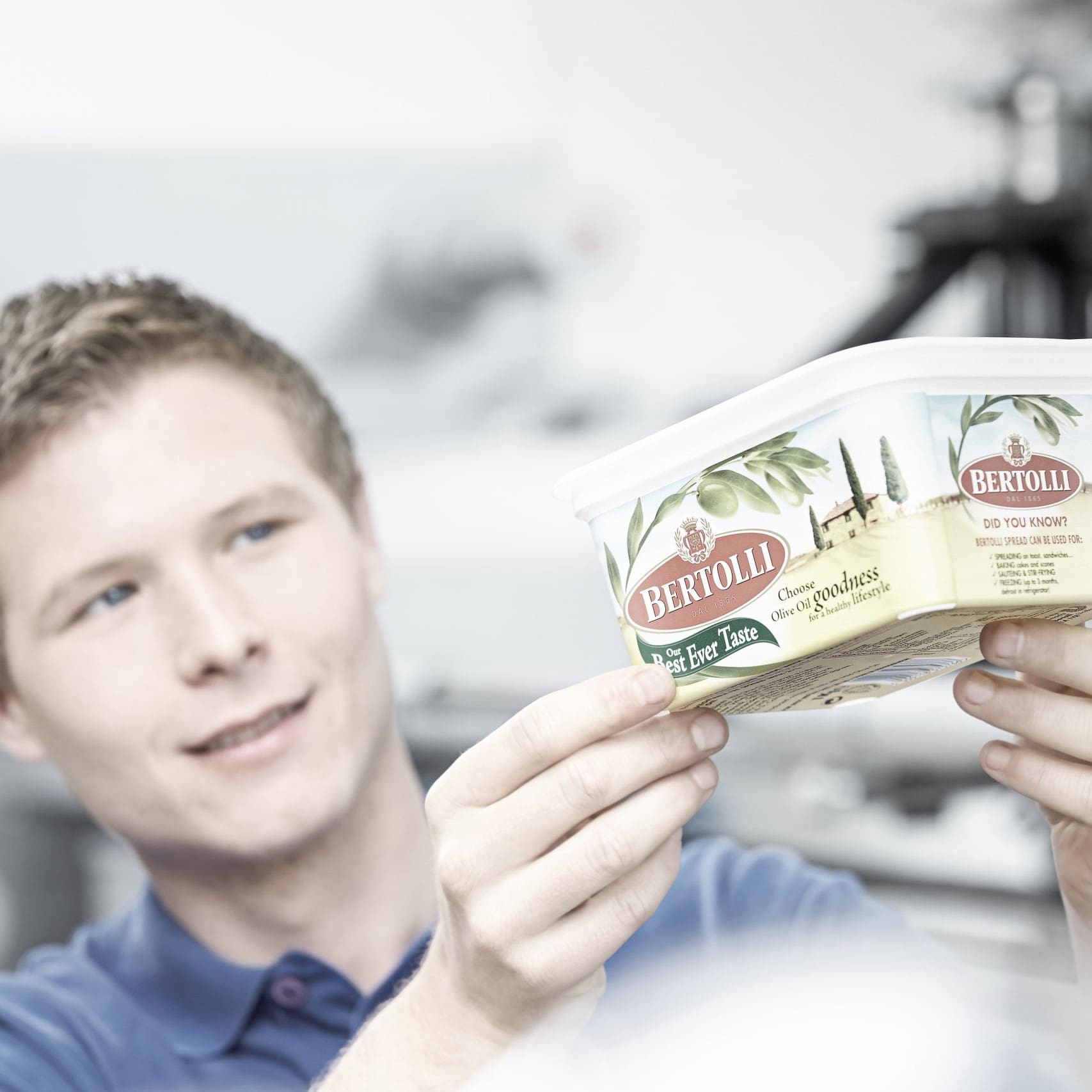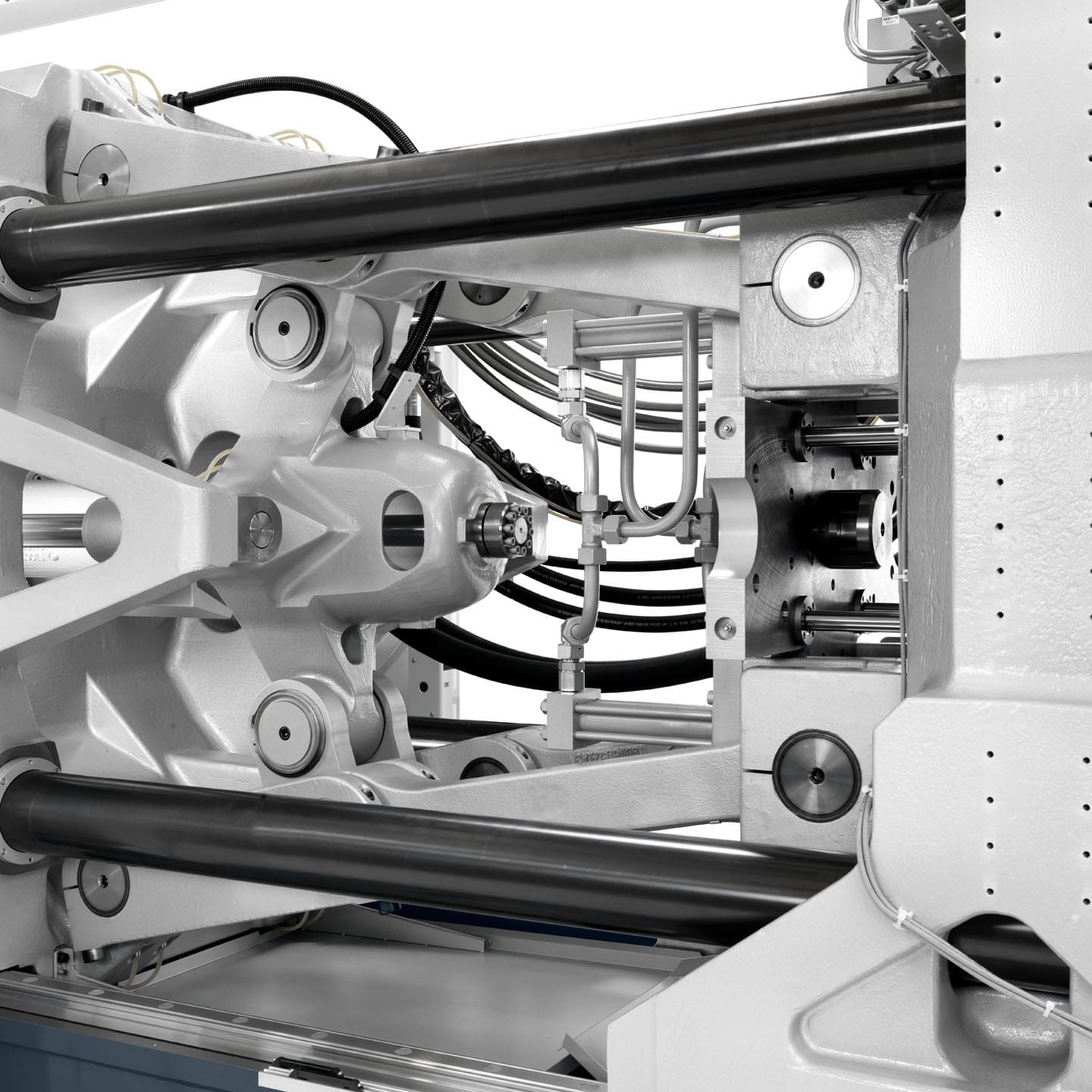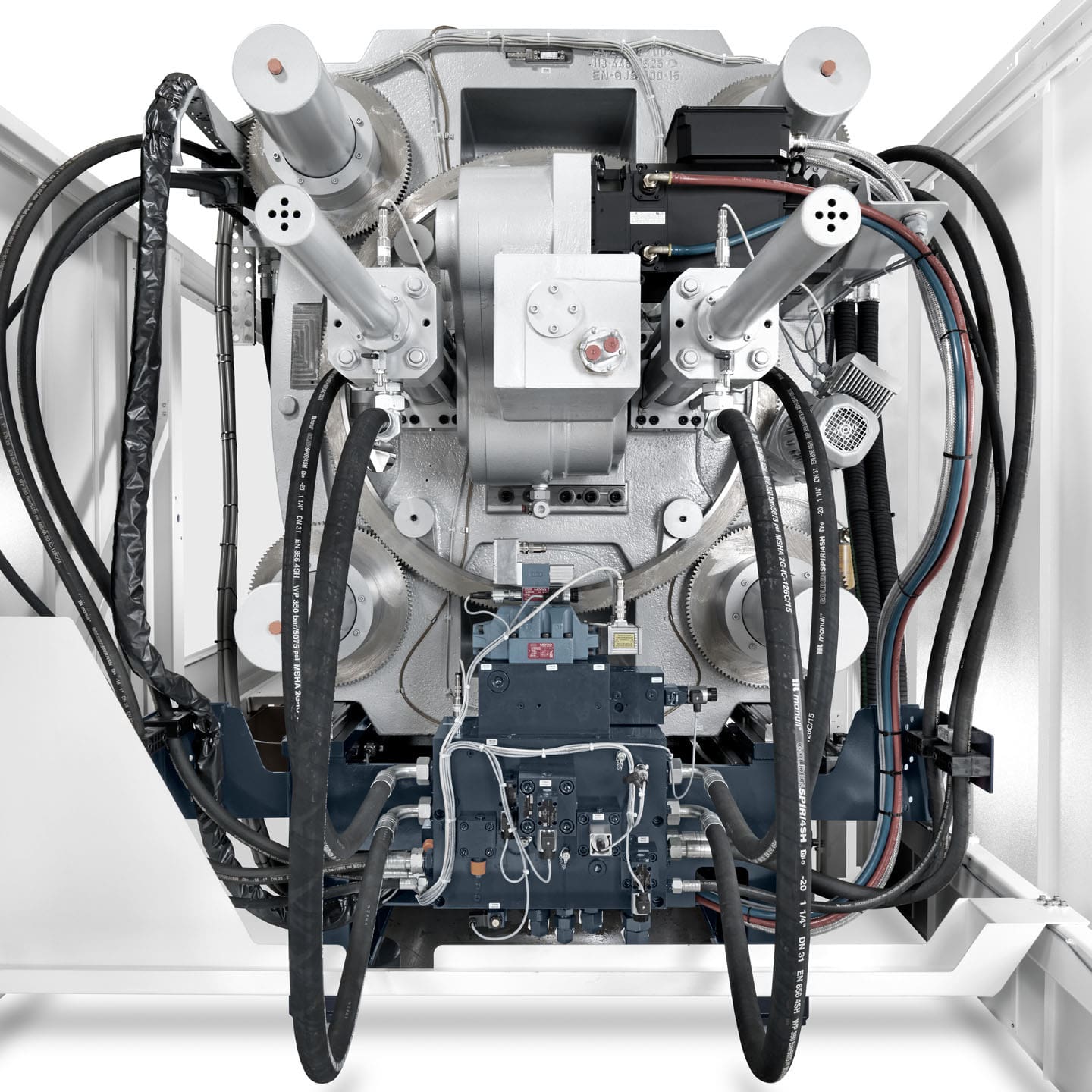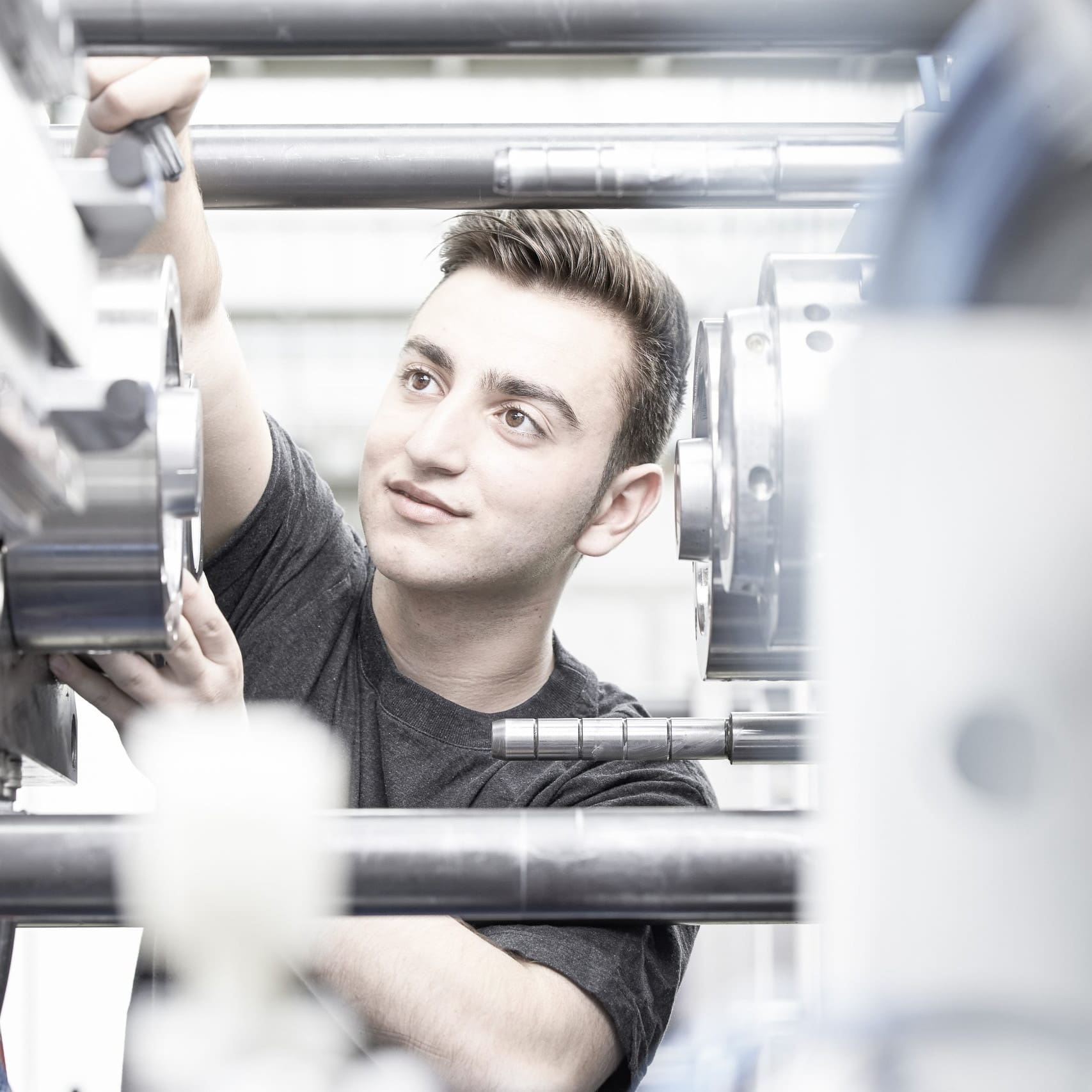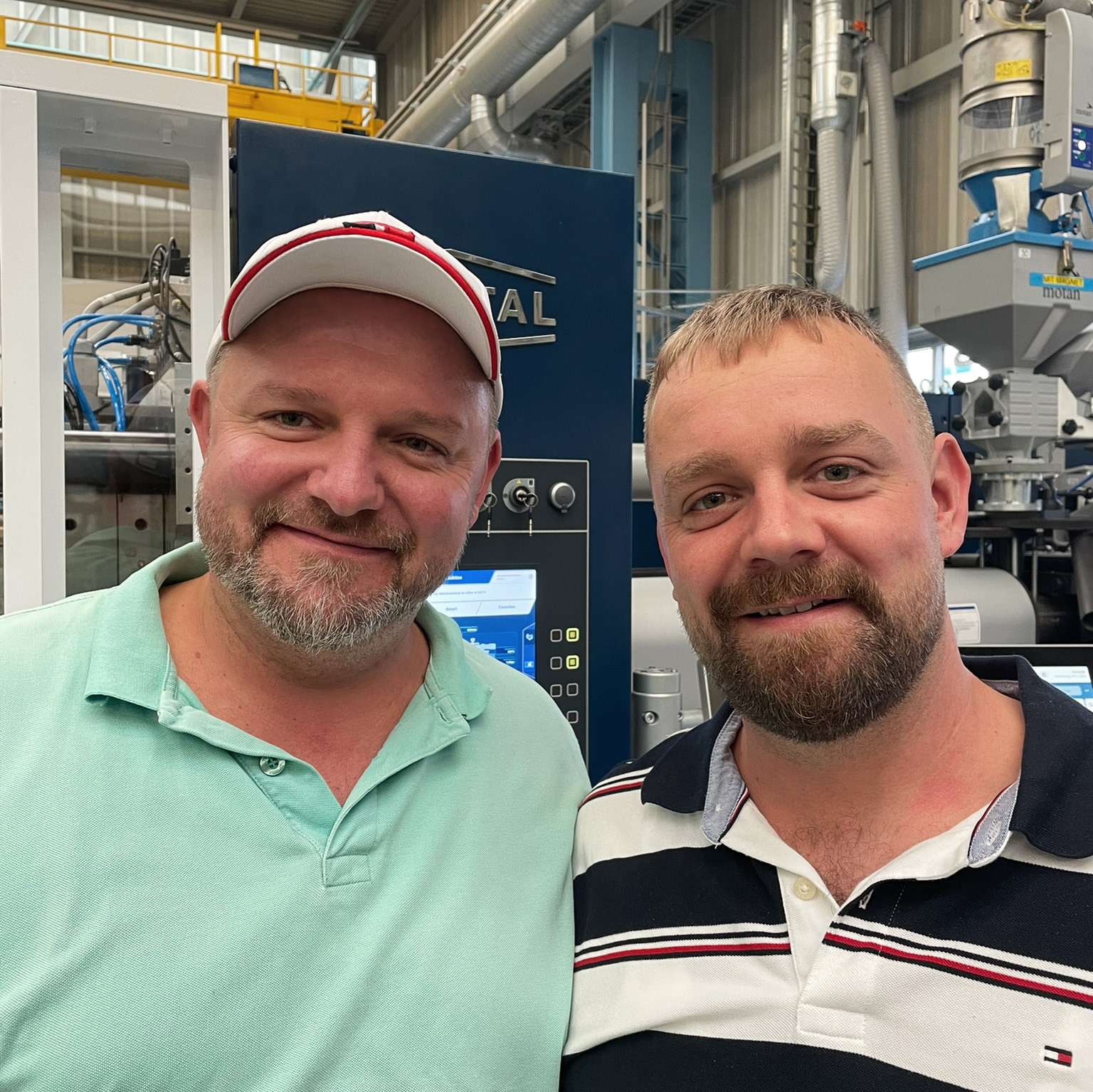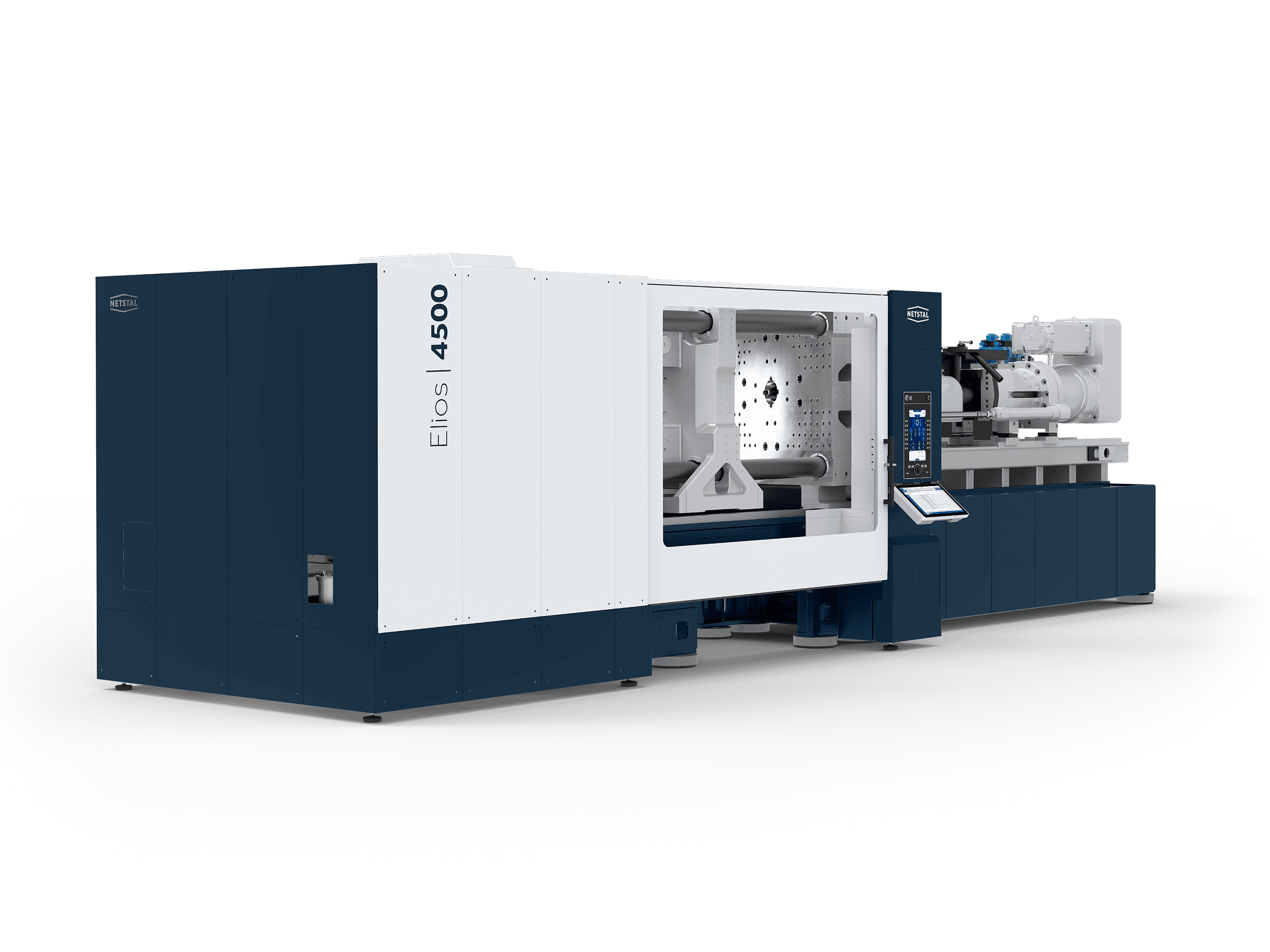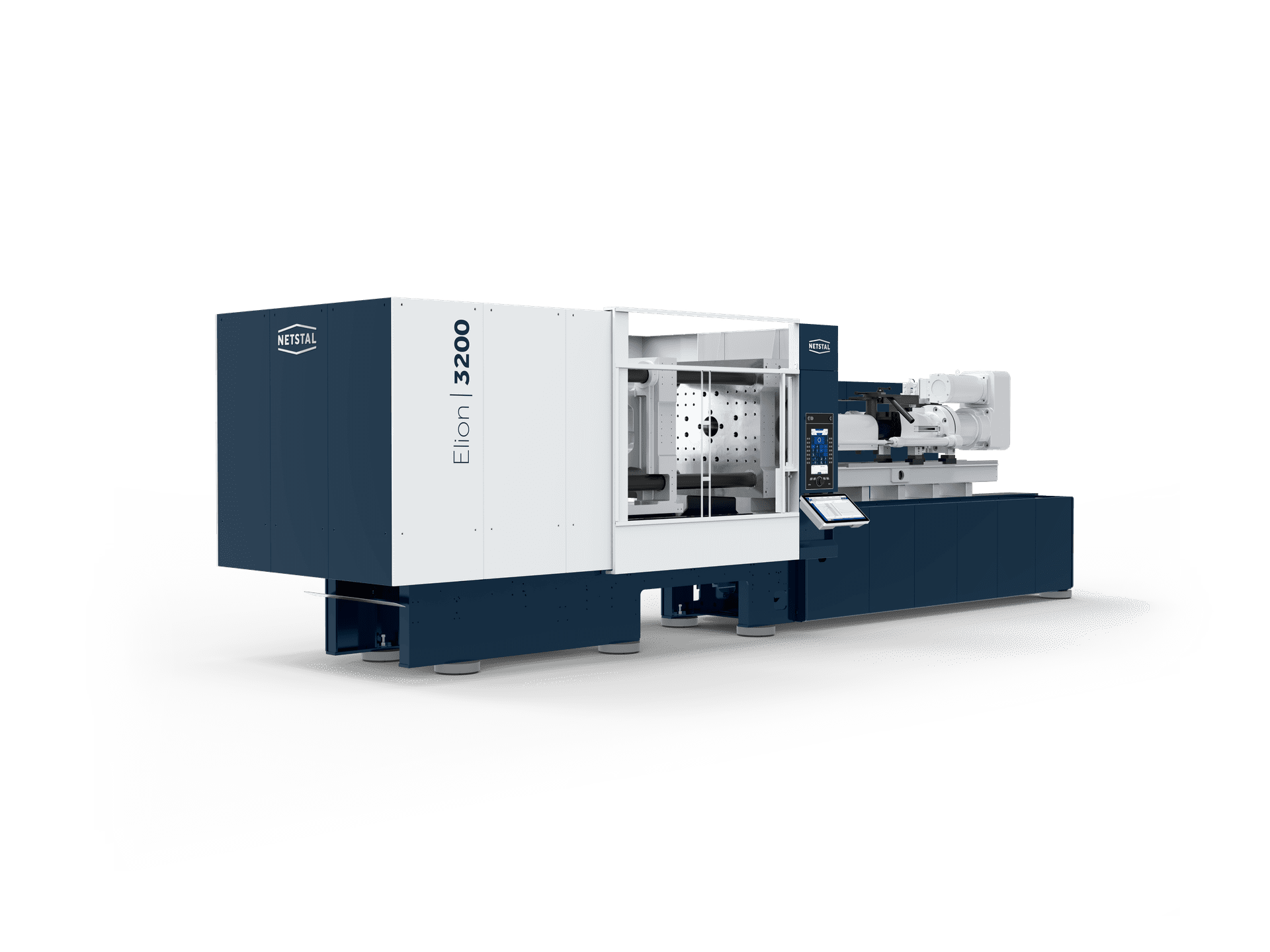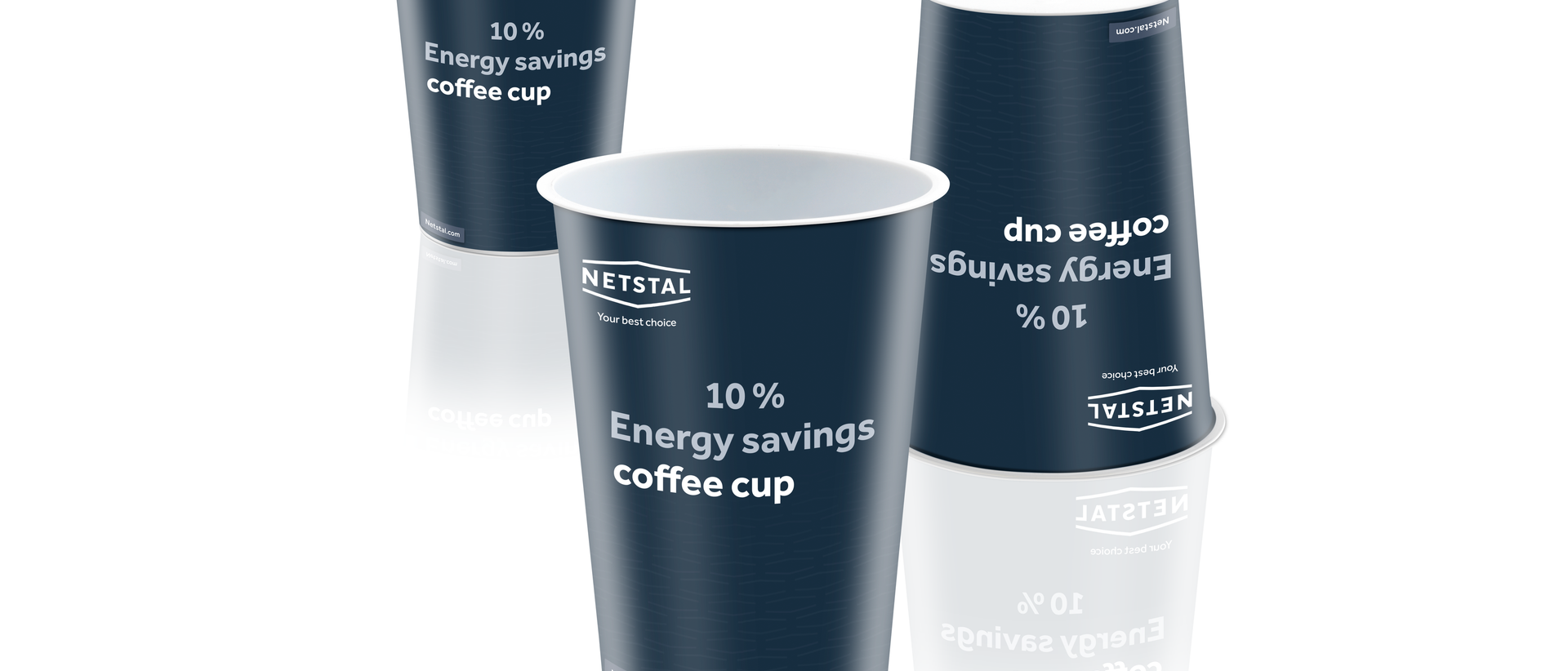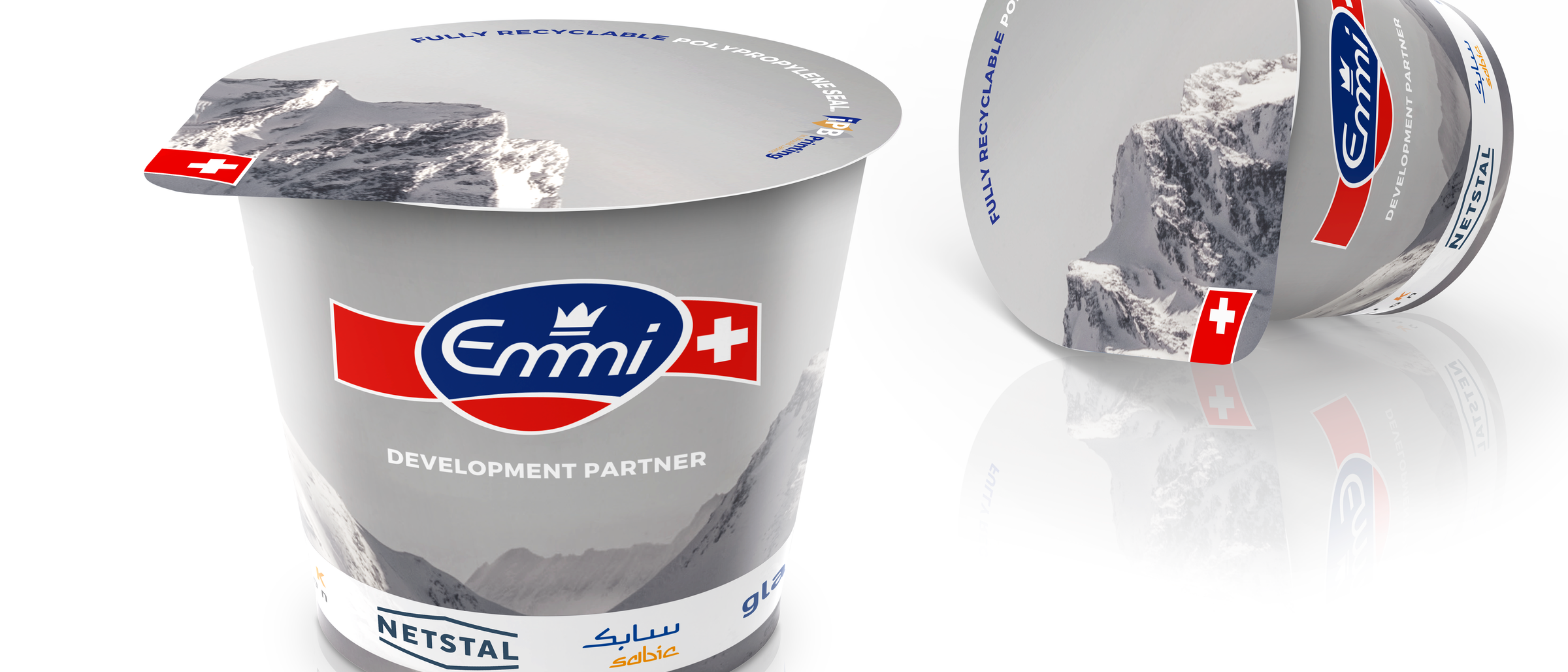We provide smart system solutions for complex thin-walled and IML applications. Minimum cycle times, additional material reductions with simultaneous premium availability and quality are key to effectively reducing your unit costs.
Your benefits
Sustainably safeguard the future
Our process engineering department has long been preoccupied with reducing the weight of plastic packaging and ever thinner wall thicknesses. The new EU packaging directive heralds an increasing focus on processing progressively higher proportions of recyclates in food contact packaging in the coming years. With Netstal you have the ideal partner at your side.
Meaningfully reduce energy costs
Thanks to kinetic energy recuperation combined with an energy-optimized drive unit with optional adaptive system pressure reduction, our ELION and ELIOS series machines impress with the lowest energy consumption in competitive comparison. You save energy costs and simultaneously reduce your production’s ecological footprint.
Sustainably increase availability
Our recipe to successfully increase your system availability: Reliable technology that functions at maximum speed with peak precision in 24/7 operation. In the unlikely event of a problem, you can always fall back on our global service network. Being localized, we can provide support either on-site or online.
"We have been working with Netstal machines for many years. With Netstal, we consistently produce with maximum efficiency. In addition to the quality of the machines, we appreciate the excellent customer service."
Manfred and Christian Schägner, Manfred Schägner GmbH
System solutions
Netstal provides you with bespoke system solutions for performance-based thin-walled applications from a single source. We configure the best system solution for your proposed application. From the basic configuration with machine, mold and part removal through to numerous optional extras: When designing a complete, bespoke turnkey system, we collaborate on your behalf with leading industry and market partners.
Process chain
Project idea
- Product idea (specific idea of molded part)
- Product concept
- Product specification
Concept study
- Parts concept
- Part optimization weight, functionality, design, decoration
- Technology evaluation (process)
- Material evaluation/definition
Project work
- System definition/design
- Machine definition/design
- Tool concept and planning
- Machine supply and infrastructure definition
- Planning of primary periphery (material preparation and supply)
- Planning of secondary periphery (removal and downstream equipment / Q control / packaging station)
- Cost simulation / optimization
Implementation
- Detailed design of all plant components
- Procurement and production
System installation and factory acceptance test (FAT)
- Initial installation
- Function test
- Quality and performance testing
- Initial customer training (all components)
- System acceptance based on contract data
Installation at customer site
- Installation and commissioning
- Training on site
- Handover and production start
Process and production support
- Process optimization with regard to quality, efficiency, cycle time, etc.
- Advice on preventive maintenance
- Follow-up checks of process stability
- Service and maintenance work
- Machine calibration
Process chain
❶ Project idea
- Product idea (specific idea of molded part)
- Product concept
- Product specification
❷ Concept study
- Parts concept
- Part optimization weight, functionality, design, decoration
- Technology evaluation (process)
- Material evaluation/definition
❸ Project work
- System definition/design
- Machine definition/design
- Tool concept and planning
- Machine supply and infrastructure definition
- Planning of primary periphery (material preparation and supply)
- Planning of secondary periphery (removal and downstream equipment / Q control / packaging station)
- Cost simulation / optimization
❹ Implementation
- Detailed design of all plant components
- Procurement and production
❺ System installation and factory acceptance test (FAT)
- Initial installation
- Function test
- Quality and performance testing
- Initial customer training (all components)
- System acceptance based on contract data
❻ Installation at customer site
- Installation and commissioning
- Training on site
- Handover and production start
❼ Process and production support
- Process optimization with regard to quality, efficiency, cycle time, etc.
- Advice on preventive maintenance
- Follow-up checks of process stability
- Service and maintenance work
- Machine calibration
Please accept YouTube cookies to play this video. By accepting you will be accessing content from YouTube, a service provided by an external third party.
If you accept this notice, your choice will be saved and the page will refresh.
Please accept YouTube cookies to play this video. By accepting you will be accessing content from YouTube, a service provided by an external third party.
If you accept this notice, your choice will be saved and the page will refresh.
Blog posts about packaging
July 9, 2024
10.5 % energy saving with a thin-walled cup
March 13, 2024
Injection Compression Molding: Who will be first?
Life Cycle Services
Life CycleServices
Start-up phase
We provide support from the very outset with machine installation and commissioning all the way through to staff training, even in the project planning stage if required.
An ideal start creates a firm basis for your success. You have our full support from the very beginning. Our engineers guide you from installation right through to successful initial production. We provide support with machine installation and commissioning all the way through to staff training, even in the project planning stage if required.
Installation
Our highly motivated team will ensure the quick and professional installation of your system.
Training
Well-trained operators are the cornerstone of successful system utilization.
Remote Support
Our state-of-the-art remote maintenance solution provides support as early as commissioning and the ramp-up phase.
Commissioning
Our specialists install your system on site, train your operators and carry out trial and acceptance runs with them.
Spare part packages
Even before your system is up and running, we coordinate customized spare parts packages for your specific application.
Training courses
Well-trained operators ensure a high level of production and machine safety. Netstal offers a comprehensive training program at the company training center as well as customized training at your location.
Troubleshooting
A functional fault may result in a loss of capacity, lower product quality and reduced productivity. Our optimally trained technicians and tightly woven global service network enable us to provide fast rectification.
Preventive maintenance
Preventative maintenance largely averts unplanned and expensive downtime.
Remote Support
Our state-of-the-art teleservice allows us to directly access your system for swift troubleshooting and support.
Hotline
If technical problems or machine failures occur, a quick and competent solution is paramount. We support you with our technical know-how and commitment to quickly get your system up and running again.
Machine relocation
During the long service life of a system it may need to be relocated from one production site to another. Our service specialists provide customized services from a single source ranging from internal machine relocation to complex plant relocation.
Spare parts service
Ensuring our customers obtain original spare parts as quickly as possible when needed is the number one priority of our spare parts department. Our proactive spare parts management advises and helps select the requisite spare and wear parts.
Maintenance and repairs
Only a regularly serviced system will enable you to attain a reliable level of production when running at capacity. Regular maintenance preserves the value of the system and prevents expensive machine downtime. Netstal offers you the commensurate maintenance programs.
Inspection
To err on the side of caution, have your system inspected by our specialists. Using the requisite special tools and measuring equipment, we can quickly analyze the condition of your system and promptly carry out any necessary maintenance work. Using a checklist, we examine the system’s electrical, hydraulic and mechanical components as well as its safety technology. The resulting reports provide details of any need for spare parts or further action.
Application consulting
Need support for your applications or processes? Draw on the experience and advice of our process engineers who would be delighted to help.
Warranty
In the case of pending problems or failures, we provide the necessary parts or support quickly and unbureaucratically.
Life CycleServices
Utilization phase
The minute you start using your system, our experienced service team are on hand to provide a broad range of diverse services.
Our fast and extremely competent service ensures production runs smoothly and efficiently. The minute you start using your machine and system, our experienced service team are on hand to provide a broad range of diverse services. As a consequence, the availability of your machines and system are safeguarded throughout the production process.
Life CycleServices
Optimization
So you always efficiently utilize your system and can met new requirements, we offer substantiated specialist know-how ranging from technical consulting and individual component optimization, right through to preventative maintenance measures.
Our aim is to ensure your system and employees remain at the cutting edge of technology. New technologies can be integrated into existing systems, allowing you to keep up with the very latest innovations. Following a qualified technical conversion, we provide your staff with the commensurate further training.
Retrofit work
Retrofitting is often necessary to meet new requirements. In this context, we supply ready-to-install turnkey solutions, including all the commensurate services.
Process consulting
Should requirements change in terms of materials, tools and processes, our experienced process engineers will support you with the implementation of any necessary measures.
Modernization
Newly developed technologies can be integrated to increase the productivity of your system. These include our state-of-the-art controller and newly developed machine components.
Energy consulting
Increasing energy costs make analysis of your system a sensible investment and one we would be delighted to advise you on: Whether that involves optimally adjusting drive motors or thermal insulation of the heater bands.
General overhaul
You are happy with the system and would like to extend its service life. Plan a general overhaul of your system with us and continue to get the best out of it.
Used Machines
We offer cost-effective solutions and comprehensive benefits in terms of purchasing, selling or leasing a used system.
Life CycleServices
Extend the life cycle or phase out?
Has your system seen better days? Not a problem! We can make your system fit for the future through a state-of-the-art upgrade or general overhaul.
After performing admirably for many a year, although your system is past its prime and in need of commensurate repair, you would still like to keep using it. We would be delighted to help with advice on practical measures and investments. With a general overhaul, we can make your system fit for the future.
